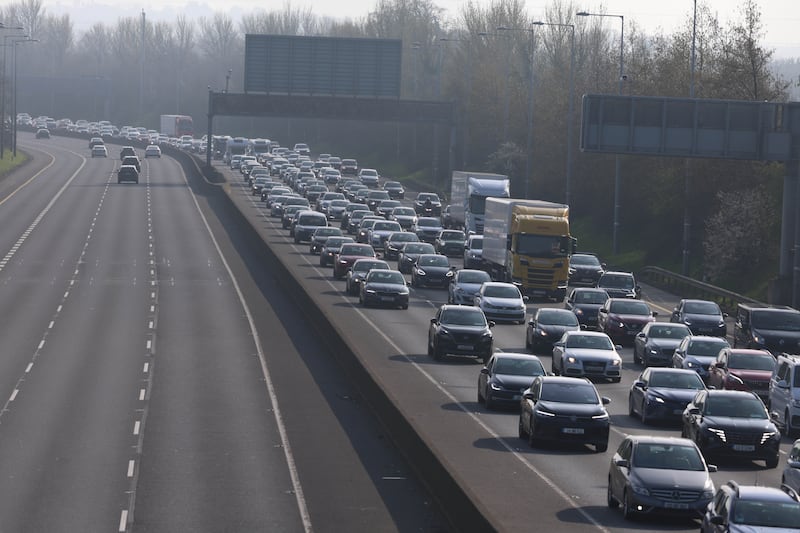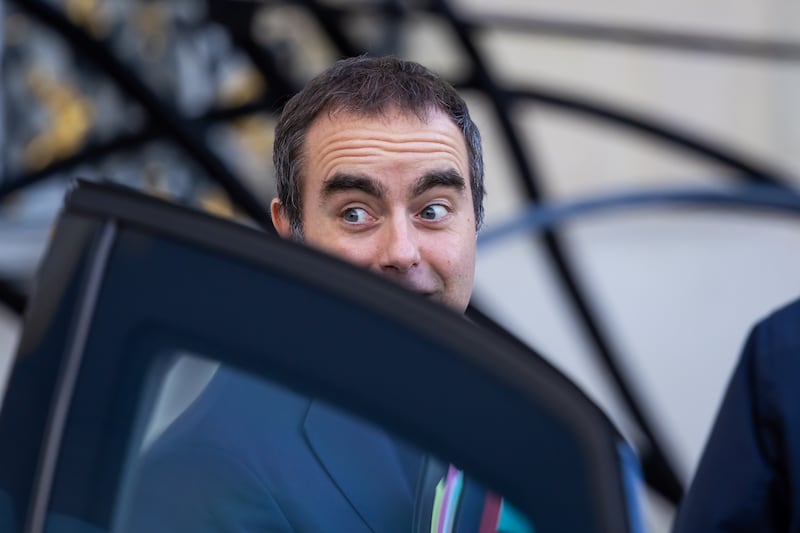The need to let children and teenagers take risks can be a scary message for parents to hear in our safety-obsessed world. But it’s a vital part of youngsters’ development and the summer break from school is a great opportunity to step out of the rut of routines.

Whether it’s risky play for a younger child or adventures for a teenager, these activities push them outside their comfort zone and allow them to experience uncertainty, says Dr Mary O’Kane, a lecturer in psychology and education, and author of Anxious Children in an Anxious World – Facing Fears and Finding Brave. Getting acquainted with the physicality of anxiety is a vital life lesson, as it helps them to recognise and cope with it in the future.
Their heart might be pounding, they have butterflies in their tummy and sweaty palms, “but they’re actually learning, this is what it feels like to feel uncertain. They’re learning how to evaluate risk. They’re learning what happens to their bodies when they feel scared, and that is so important.”
Parents of teenagers tend to equate risk-taking with negativity and danger, such as drink, drugs and sexual experimentation, and O’Kane has every sympathy for those parenting adolescents, as she is. “You’re walking a tightrope of giving them freedom and holding on to them. It feels terrifying. You are frightened that if I get this wrong ...”
READ MORE

But parents need to remember there are positive risks out there. “They forget things like, auditioning for the school play, trying out for a sports team, learning to drive.”
[ Eleven ways to let teenagers take healthy, positive risks this summer ]
Psychologist Dr Malie Coyne, author of Love In, Love Out – A Compassionate Approach To Parenting Your Anxious Child, agrees and says parents should think of risk-taking more as “stretching their comfort zone”. If you think of the comfort zone as the centre of a circle, the “growing edge” that surrounds it is where the real learning lies.
“It is important to get them to experience life with other people” – by involving them in community service projects, supporting their group activities, encouraging them to make their own decisions, giving them tools to self-soothe. Failing at something is not a bad thing, she stresses. If it turns out they don’t like an activity they have tried this summer, or don’t do well at it, they will have learned something about themselves. “There is no such thing as failure – you learn. How do we grow if we don’t take chances?”
Teenagers’ brains are primed for rewards from risks and taking them increases their resilience, says Coyne, who believes less risk-taking is associated with anxiety. “Teens nowadays feel less control over their lives – feeling a lack of control leads to greater anxiety.”
However, there are a lot of pressures on today’s teenagers and she has no time for the “blaming” language of “helicopter parenting” and the “snowflake generation”.

“We are the way we are, when you look at it from a sociological perspective, because of the environment we live in and because of the history we’ve had.” Right now, parents are trying to cope with the perceived and invisible dangers of the virtual world, while in our increasingly disconnected, real-life communities, there is “more isolation and less support”.
There is a culture today of not letting tweens and younger teenagers out unsupervised, says Stella O’Malley, psychotherapist and author of What Your Teen is Trying to Tell You. This is not good for their self-development and the facts speak for themselves. “If all of this supervised play was leading to a better mental adolescence, great, but it’s not. The stats are in.”
We might think teenagers are safer when they are at home communicating with friends through their devices, rather than hanging out in a local park or in town, but it’s not true, she argues. “Where are the attacks on teenagers in Ireland? It’s on their mental health and the attacks on their mental health are much more likely to be if they are bored in their bedroom and go online.”
Taking social risks in the real world is what we need to encourage. When there is a “virtual wall” between them and their peers, they do not learn the social skills of vulnerability and intimacy. The Covid lockdowns exacerbated that trend of keeping interaction at the other end of a smartphone or gaming device.
When meeting in person, you are more likely to nurture and strengthen that friendship, O’Malley says. However, “it might go wrong. You might weaken the friendship, but actually that’s part of the risks of adolescence.”
When you first fancy somebody and tell them, there is an intimacy risk, she says, but if you never take those risks, you’ll never fall in love. Yet, she sees teenagers, particularly boys, avoiding the kind of vulnerability they used to be forced into because they wanted to be with girls, or sometimes with other boys. “They wanted sexual connection and so they were willing to be vulnerable. Now they think, ‘I don’t need to be vulnerable, I can just go online’.”

She recalls one boy telling her that he kept the girls in his real life as “just friends”, while his sexual events were all online. “That was avoiding fear, avoiding intimacy, avoiding risk, avoiding vulnerability, avoiding rejection. And he was very satisfied with it.”
That’s quite common, she says, because they find responding to their adolescent sexual awakening is “too messy” in real life.
Whereas they need to be out in the park, the boys on one side, the girls on the other. They need the flirting and all that goes on in the early years of sexual attraction. It is much healthier to do that in reality, she believes. When they bring that online, teens can be more impulsive, taking their tops off and sending nude photos.
For parents who recognise why, in theory at least, they should loosen the leash on their tweens and teens, it can still be hard to do in practice, especially when fellow parents don’t do likewise. “What’s happened is this extraordinary scenario where the wild, unsupervised, almost feral kids are allowed out, and the other kids aren’t allowed out,” O’Malley says. So you might need to talk to other parents of your offspring’s peers about ways to give them greater freedom. It’s hard to feel you are doing a solo run on allowing them to go to the shops on their own, or use public transport, or spend a summer evening on the beach.
She says when she talks about risky activities to people who work with children they totally get it. But when she delivers the same talk to parents, they look at her as if she has gone rogue. Increasingly, we want to protect our children from any discomfort, never mind danger. If they appear anxious, we rush to start worrying about their mental health. And so do they. Yet a certain amount of anxiety is part of being human.
Arguably, younger children need to learn touches of all sorts of negative emotions in what O’Malley describes as the “shallow water” of childhood, when a parent is on hand to soothe them. As they face similar but stronger emotions when they are older, they know that they can handle them.
When they become adolescents they are hard-wired to take risks and the vast majority of them do, says O’Kane. The emotional centre of the brain is developing quicker than the part responsible for all the sensible stuff, the impulse control, the judgment, she explains. Which is exactly what parents are afraid of. “We should be starting when they’re young. If we, step by step, allow them to take risks and to realise, ‘Oh my gosh, I am strong I’m capable and I can make decisions’, then we’re helping them become more resilient.” This prepares them better for life’s challenges – in both the real and online world.
- Read: Why we need to bring back ‘risky play’ for children
- Sign up for push alerts and have the best news, analysis and comment delivered directly to your phone
- Join The Irish Times on WhatsApp and stay up to date
- Listen to our Inside Politics podcast for the best political chat and analysis





















